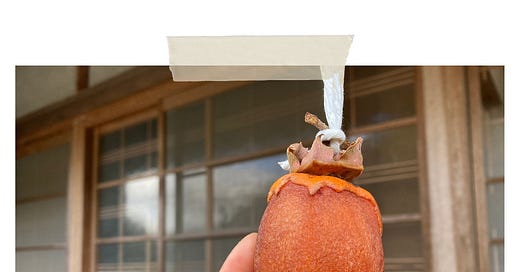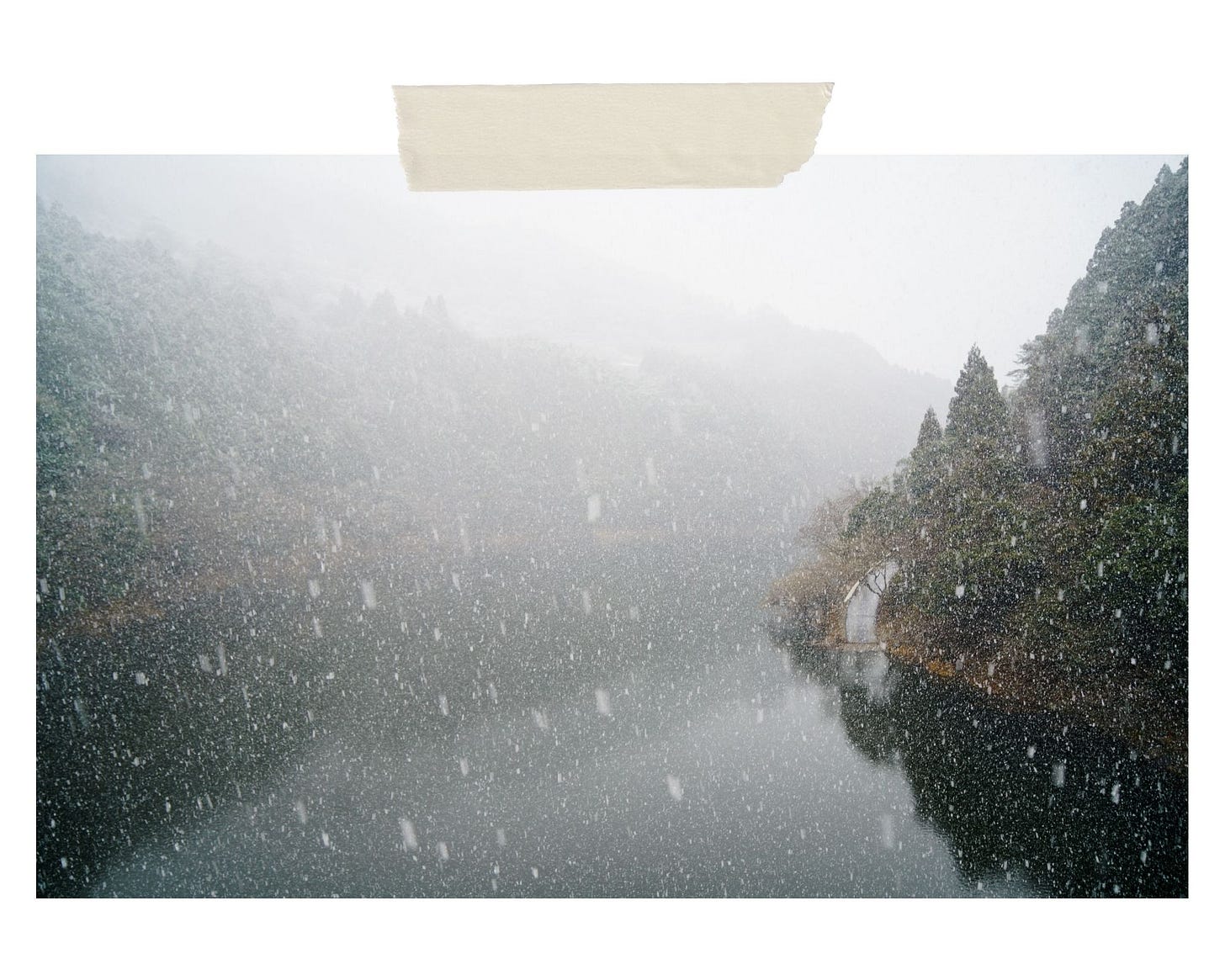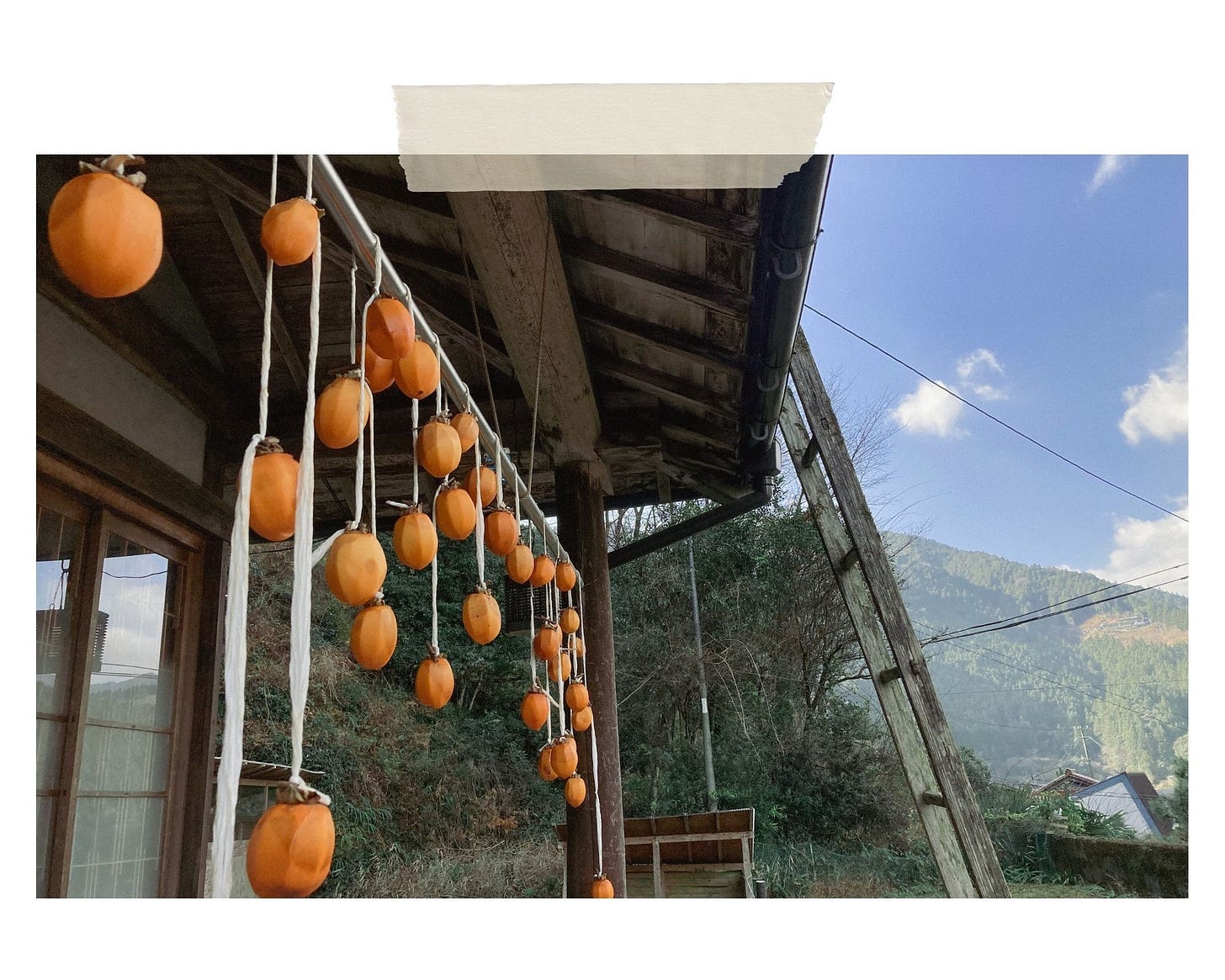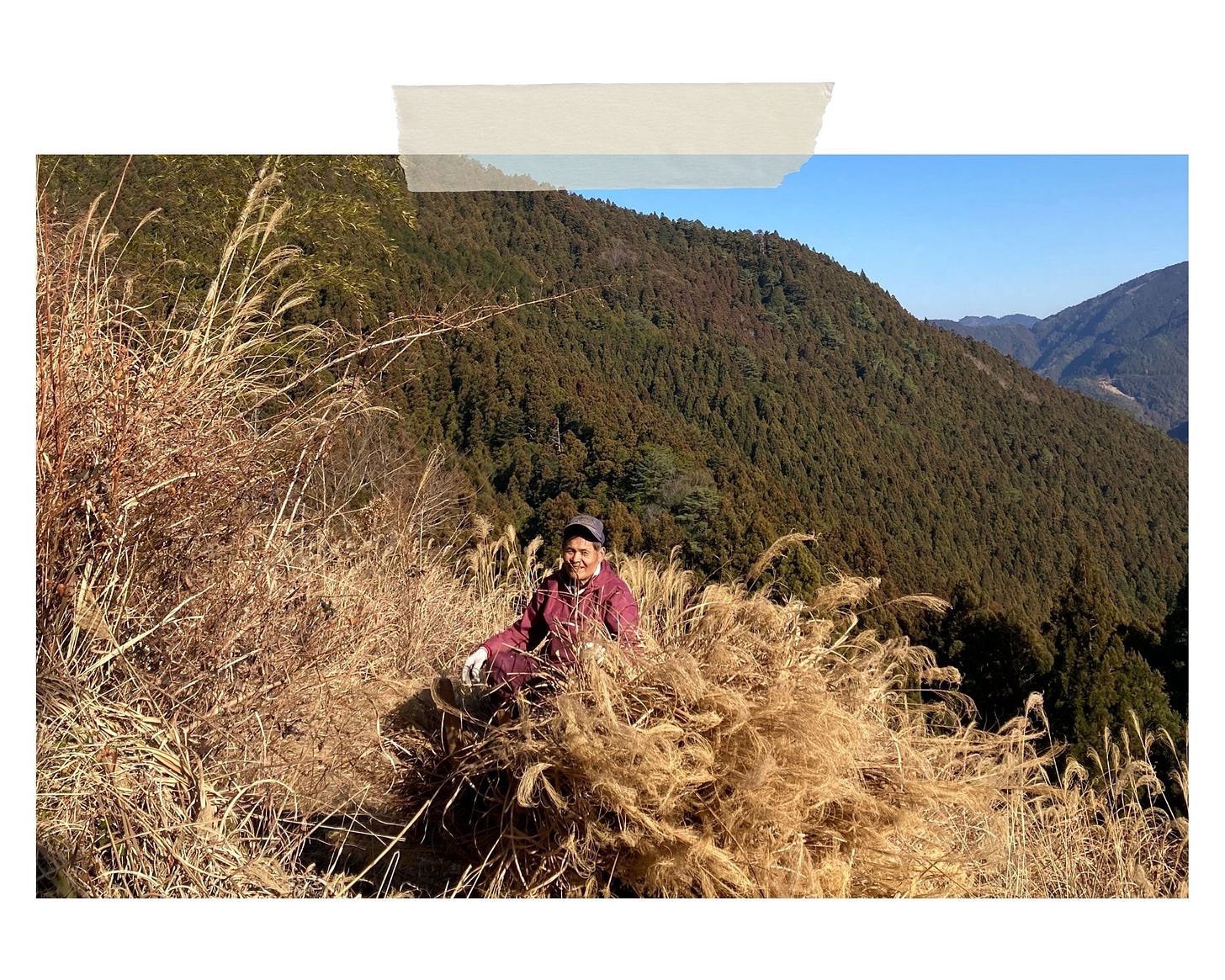A gentle hello from snowy Kamikatsu. It’s only snowed a couple of times these past weeks and each time it usually melts by midday, but oh how magical is to wake up to snow!
Growing up in Canada, I always felt a certain melancholy as summer came to an end. It marked the transition from carefree, sunlit days into a darker, cooler, and quieter season. While I eventually grew to love the cozy layering of knits and wools, I’ve always carried a deep nostalgia for summer. But there was one saving grace in this seasonal shift—autumn was apple season.
Almost every year, my family and I would visit an apple orchard, riding a wagon through endless rows of apple trees. At the start of each row, a small picketed sign would list the variety waiting just beyond it. We’d fill our baskets, bringing home apples by the kilogram, eating several a day.
Our annual apple-picking trips were planned around the ripening of our favorite varieties. My mom and I would bite into a store-bought McIntosh and say, "It’s not quite the season yet—let’s wait." I loved the crunchiness of a Red Delicious and the balanced flavors of an Ambrosia. I avoided the overly sweet varieties like Honeycrisp and Pink Lady, which remind me of Fuji or Hokuto—popular apples grown in northern Japan. But more than any red or yellow apple, my favorite was always the tart, bright green Granny Smith.
I (seriously) digress… I could spiral endlessly into apple talk. What I really wanted to say is that, for me, autumn was always represented by the apple. But since moving to Japan, that role has been replaced by kaki (柿)—persimmon. (Persimmon—what a funny English word.)
Though kaki is shaped much like an apple and fits perfectly in the palm of your hand, it’s not a replacement for one. I also didn’t grow up eating persimmons, so when I moved to Japan in 2020, I had my first conscious memory of trying one. I was surprised by how abundant they were, hanging from trees almost everywhere in the countryside and filling baskets at farmer’s markets. But I had no idea how to eat them, when to eat them, or how to tell the different types apart.
When I was living in Bangladesh, I also didn’t have access to local apples so instead, I deep dived into mangoes. I could identify about 8 different species of mangoes just by looking. There’s something really fun about digging deeper than the surface level of any food. Once you know an apple isn’t just an apple, or cheese isn’t just cheese, you get the joys of discovering nuances within one huge umbrella category.
So it’s not summer, it’s also not autumn anymore, and this isn’t writing about apples or mangoes, so let’s fast-forward to the present. I’m in my second year of discovering the absolute joys of this simple, quintessential autumn fruit known as the kaki and the winter snack known as hoshigaki. When the air gets cooler, it’s the cue that the season for kaki or persimmon has arrived.
Hoshigaki
There are two main types of kaki: one that can be eaten raw and one that requires drying before it becomes palatable. The first is called fuyūgaki (富有柿), recognizable by its round shape and naturally sweet flavor. The second is hachiyagaki (蜂屋柿) or shibugaki (渋柿), known for its intense astringency. If you’ve never tasted something astringent, imagine the sensation of your tongue going dry and slightly numb.
However, once dried, this intensely astringent kaki transforms into hoshigaki (干し柿)—a tender, subtly sweet, and chewy bite-sized snack. Hoshigaki is one of Japan’s oldest preserved fruits, valued for its ability to last through the winter without spoiling.
“That whole process takes a hard bitter unpalatable fruit, and time passes and it matures into something sweet,” Zauner says. “I felt, as someone with this narrative of writing about grief and loss and more bitter topics, embracing the sweeter side of life—embracing joy—was a fitting metaphor.”
—Michelle Zauner (author of Crying in H-Mart)
If you’re curious about the drying process and how it transforms something inedible into something magically delicious, the simple explanation is that drying breaks down the tannins responsible for the fruit’s intense bitterness. These tannins are water-soluble, which is why an unripe shibugaki tastes astringent when eaten fresh. But as the fruit dries, moisture is drawn out, and the natural sugars become more concentrated, forming a delicate, powdery sweetness on the surface.
The first step is sourcing the kaki—and living in the countryside means abundance is often shared. I was told I could pick as many as I wanted, so I brought home a heaping bucket. The next steps: peel, string, briefly boil to disinfect, and then hang them to dry.
The title of this newsletter, A Labour of Love, is a nod to the final stage of drying—but also to the daily kneading that’s required. After the first week, the kaki begin to shrivel, and their skin starts to harden. From that point on, each one needs to be gently kneaded every day to soften and coax out its sweetness.
Kneading hoshigaki has become part of my morning rhythm, right before feeding the dogs and chickens. So there’s a bittersweet feeling in taking them down now that they’re finally ready to eat. I only wish I could share them with everyone! This lesser-known dried fruit, in my opinion, is worth both the effort to make and the experience of tasting.
Last week I wrote about Kamikatsu’s last thatched roof house. Thank you to everyone who read it and supported the campaign! This week I helped the community cut straw that will be used for the thatched house.
I was taking a break from cutting kaya when a local grandpa offered hoshigaki to all the volunteers. Excited, I studied his hoshigaki before taking a bite. It was much sweeter than mine and had a delicate white powdered coating—like a dusting of flour. I’d seen it before at markets, but I never knew how to achieve it myself. That light coating, I learned, is a natural crystallization of sugars.
Curious, I asked Grandpa, “What’s the secret to getting that natural sugary coating?”
He smiled and said, “I can’t tell you the secret… but try putting them in a ziplock bag with wara (rice straw).”
I laughed—because, of course, he had just given me the secret. So next time, I’ll try it!
Have a wonderful afternoon and start of the week. Here’s a short poem by the late Thich Nhat Hanh, a Zen Buddhist monk, poet and peace activist who passed this week at age 95.
There’s a revolution that needs to happen and it starts from inside each one of us. We need to wake up and fall in love with Earth. Our personal and collective happiness and survival depend on it. — Thich Nhat Hanh
Wake up and fall in love with the Earth. How simple and profound.
As always, take care,
Kana












Please don't stop writing on Mondays. I've been in such a gloomy episode of my life and your writings make Mondays worth waking up for. I always look forward to how you end your newsletter too. Enchanting writing.